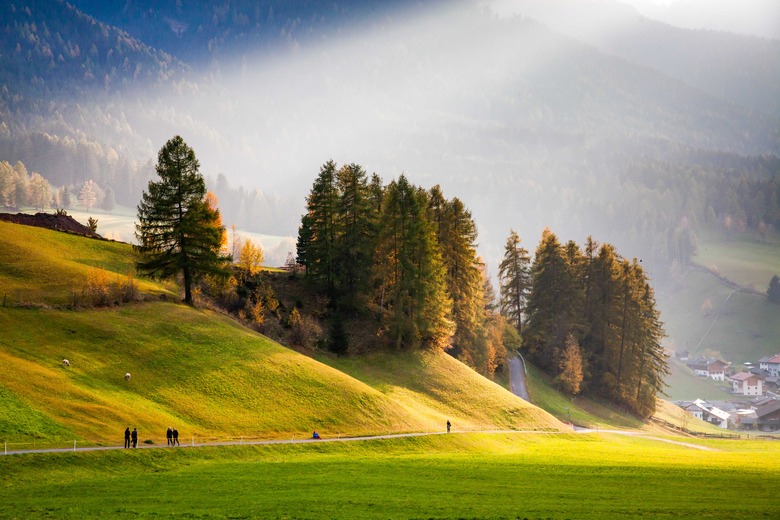The Differences In Woods, Forests & Jungles
Woods, forests and jungles are three distinct ecosystems that are often confused by children and adults alike. While all involve trees and wildlife, there are differences between the three – especially between the deciduous, temperate forests and the jungles of the tropics. They are also home to different kinds of animals, birds and insects.
TL;DR (Too Long; Didn't Read)
Woods and forests have no clear delineation in scientific terms, although they are widely considered to be slightly different. Both are expanses of land covered in trees and inhabited by animals, but woods are smaller and their canopy cover significantly less dense than those of forests. Jungles are a colloquially-termed subtype of tropical rainforest that is particularly dense with undergrowth. Woods and deciduous forests are populated by animals such as deer, bears, mice and owls, while jungles are populated by animals such as snakes, monkeys, macaws and crocodiles.
Woods and Forests
Woods and Forests
A wood is an area covered in trees, larger than a grove or a copse. A forest is also an area covered in trees, but it is larger than a wood. The trees in woods and forests grow thickly, and the space between them is overgrown with grasses, shrubs and underbrush. The U.S. National Vegetation Classification system differentiates them according to their densities: 25 to 60 percent of a a wood is covered by tree canopies, while 60 to 100 percent of a forest is canopied.
History of The Terms
History of The Terms
While the dictionary does not give further distinguishing information, historically woods and forests were not the same thing. In English history, woods were simply areas covered in trees. Forests, however, were similar to modern wildlife preserves. They were places where deer and other wild creatures could live and wander freely, protected by the king's laws. Forests were not necessarily woodland at the time; heaths and pastures could also be forests, if they were designated areas where wild animals were under the king's legal protection.
Jungles and Rainforests
Jungles and Rainforests
The word "jungle" is not a precise scientific term, but a colloquial one used in varying ways depending on the locale and personal preference. Rainforests are tropical forests that only have two seasons: rainy and dry. Generally, the word "jungle" is used to describe types of rainforest with very dense undergrowth. Jungles grow in tropical regions like Africa, South America, New Guinea and parts of Australia.
Jungles are like woods and forests in that they are covered in trees, but they are also full of vines, flowers, bogs, fungi and a vast array of animal and insect life. They are damp, dense, thickly canopied forests with different kinds of plant life than those found in the woods in temperate regions like England and the American Northwest.
Animals in Woods, Forests and Jungles
Animals in Woods, Forests and Jungles
Woods, forests and jungles are all full of life, but woods and forests are home to a different set of animals than jungles are. Woods and forests are populated by animals such as:
- deer
- bears
- mice
- chipmunks
- squirrels
- owls
- weasels
Jungles are inhabited by snakes, monkeys, macaws and crocodiles and a multitude of other creatures. Jungles and rainforests support more species of animals, plants and insects per acre than any other places on Earth.
Cite This Article
MLA
Mitchell, Stephanie. "The Differences In Woods, Forests & Jungles" sciencing.com, https://www.sciencing.com/differences-woods-forests-jungles-8377449/. 22 November 2019.
APA
Mitchell, Stephanie. (2019, November 22). The Differences In Woods, Forests & Jungles. sciencing.com. Retrieved from https://www.sciencing.com/differences-woods-forests-jungles-8377449/
Chicago
Mitchell, Stephanie. The Differences In Woods, Forests & Jungles last modified March 24, 2022. https://www.sciencing.com/differences-woods-forests-jungles-8377449/
